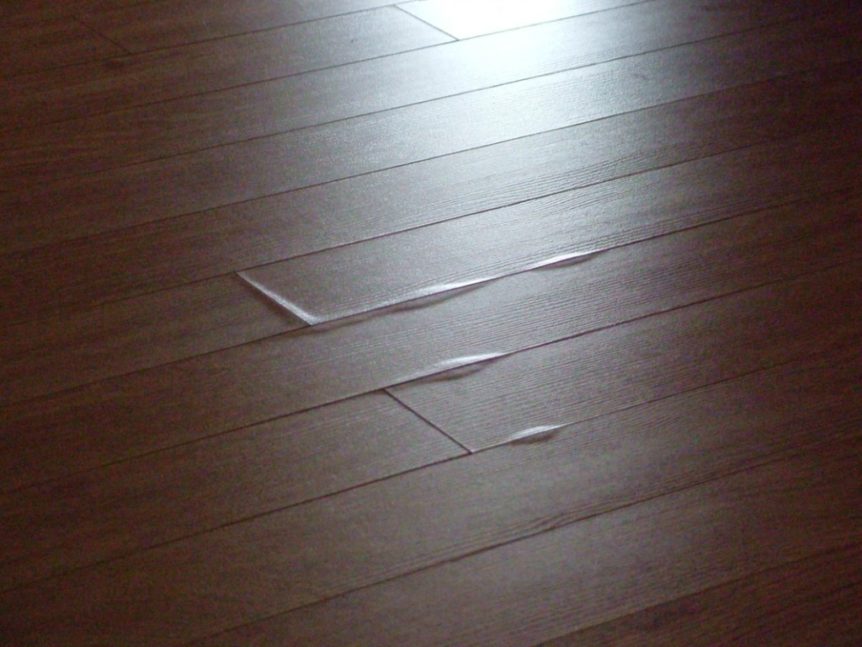
How to Prevent & Repair Water Damage to Laminate Flooring
Who doesn’t love laminate flooring? We sure do! It looks great, is easy to clean, difficult to scratch, and won’t break the bank. It’s a versatile flooring option, and its popularity grows more each day. However, there is one small problem when it comes to water: if it’s exposed to too much water for too long, the boards will almost always begin to swell, cup, crown, buckle, crack, or split. No one wants to deal with that!
Here are a few things you can do to both prevent water damage to your lovely laminate.
- Keep it away from water-prone areas. This includes areas of your home like bathrooms, kitchens, laundry rooms, mud rooms, and basements. Any room that has a major source of water in it is probably not the best option for laminate floors. Install vinyl flooring in these areas of your home instead – it’s 100% moisture-resistant!
- Wipe up spills immediately. This is probably the best way to prevent water damage. Use the proper methods for cleaning up different kinds of spills to not only prevent your floors from being damaged, but also to keep them looking their best.
- Basic home maintenance. Once every few months, do a quick checkup on your appliances to make sure they’re functioning properly and aren’t leaking. Check under sinks, behind toilets, and around water heaters for any signs of potential problems.
And if your laminate has already suffered, here are a few tips to get your floors looking as good as new!
- Locate the source of the water damage. Not all water damage is caused by leaks, but if that’s the cause of your floor’s damage, it’s best to locate and stop the leak in its tracks. This may require you to shut off the water supply or fix a broken pipe, toilet, or appliance. Prevent your floor from suffering any more damage than it already has!
- Pry up damaged boards. This may be a given, but make sure you note the planks that have taken on the most damage. Then, if you’re ready to replace them, pry the planks up using a circular saw, crowbar, or other tool. It’s important to note that each board needs to be removed one at a time – don’t risk doing any further damage by trying to pry up multiple boards at once.
- Have extra boards on hand. Unlike carpet which must be replaced entirely if it suffers major water damage, laminate flooring is comprised of planks that are easy to pop up and replace if the need arises. Have a few extra boards on hand if possible so that you can replace the damaged boards yourself. (Just make sure the subfloor is dry and free of any damage before you install the new plank!) If you don’t have extra boards, and you don’t know what style or color your specific laminate flooring is, pop out a plank and bring it to your local flooring store – they’ll be happy to help you find the same style, if not at least a close match.
- When in doubt, call the professionals! Here at Claude Brown’s, we won’t hesitate to help you fix your floors. Whether it’s advice for a do-it-yourself replacement or you’d like us to come in and do it for you, give us a call or stop by and see us. We’re happy to help!




